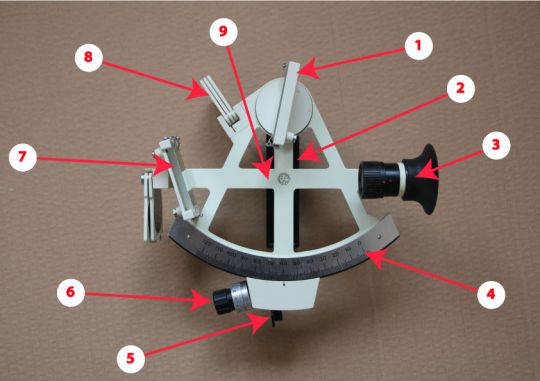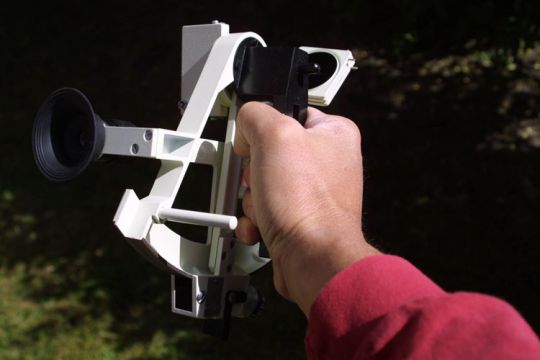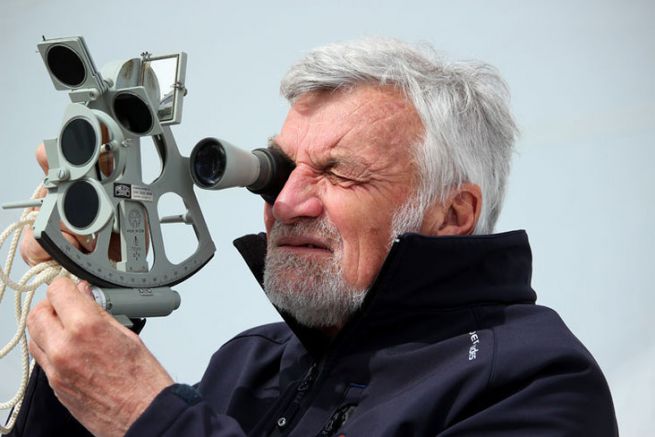A sextant is an angular measuring device for calculating the angle between a star and the horizon (but other measurements are also possible, such as horizontal measurements). By the presence of 2 mirrors, it is called a reflection device. Before the advent of electronic devices that indicate position via satellite signals (GPS among others), sextant was used to calculate the position of ships when they were sailing out of range of the coast.
Anatomy of a sextant

- 1- The large mirror
It is fixed on the swivelling alidade. This movement makes it possible to target the star used in the calculation of the point. - 2- The handle
Solidarity with the frame, it allows you to hold the device in your hand. To avoid damaging or distorting your sextant, we recommend that you always use this handle to carry it. - 3- The bezel
The bezel is an optical device that magnifies the image. Magnification makes it easier to read and see the star. A diopter adjustment is provided to adapt the navigator's vision (and avoid wearing glasses). - 4- The Limb
This graduated circle arc will be used to read the measurement. It is around him that the alidade pivots. The blade is graduated in degrees. - 5- The alidade
By pivoting at the top of the frame and carrying the large mirror, the alidade will point the angle between the two visions: the horizontal with the horizon and the targeted star. - 6- The drum
This worm screw provides a fine adjustment of the angle. If the alidade is graduated in degrees, the drum allows a reading to the minute. - 7- The small mirror
In the axis of the telescope, the small mirror reflects the image of the star targeted in the telescope. It is in fact a "half mirror". Indeed, half of the bezel provides a direct view generally towards the horizon. - 8- Filters
To avoid burning your eyes, especially when you aim at the sun, you must protect yourself by inserting tinted filters. Several filters can be superimposed depending on the luminous power of the star. - 9- The Frame
It is the masterpiece of the sextant, the body of the instrument. Previously made of bronze (on old equipment), they are now made of aluminium for precision sextants, or sometimes of plastic (to offer cheaper equipment).

Maintenance of a sextant
A sextant does not require any special maintenance. Do not grease it, otherwise the dirt will stick to the gears and grooves of the blade.
The sextant is a precision measuring device. To prevent it from being subjected to shocks, it is strongly recommended to always store it in its box (usually delivered with the device). When storing the unit, be sure to shift the alidade beyond 90°. You will never have a star after this angle. Thus, if it were to take a shock, the gears of the blade would not take play in a critical location.
Of course, avoid salt water splashes. But if by any chance the sextant catches spray, rinse it with clean water, including a mirror.








